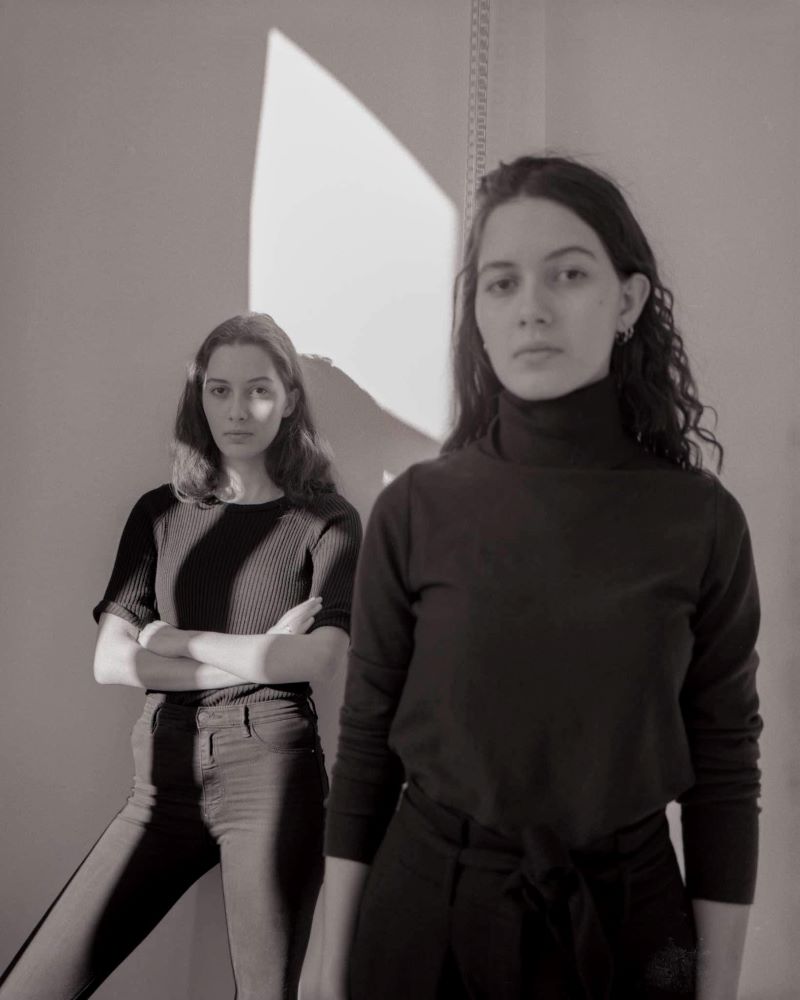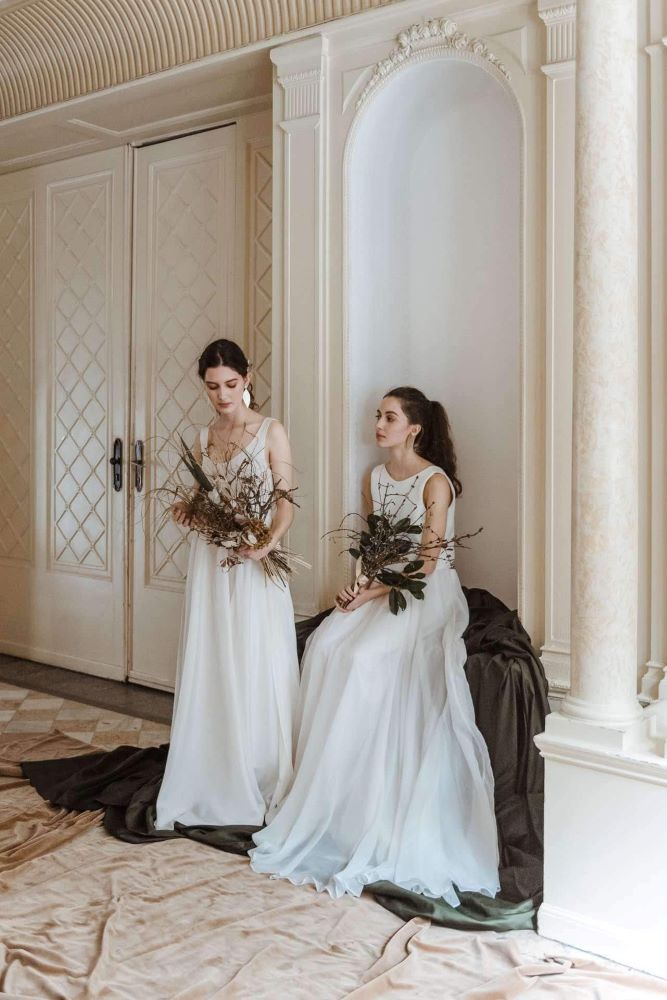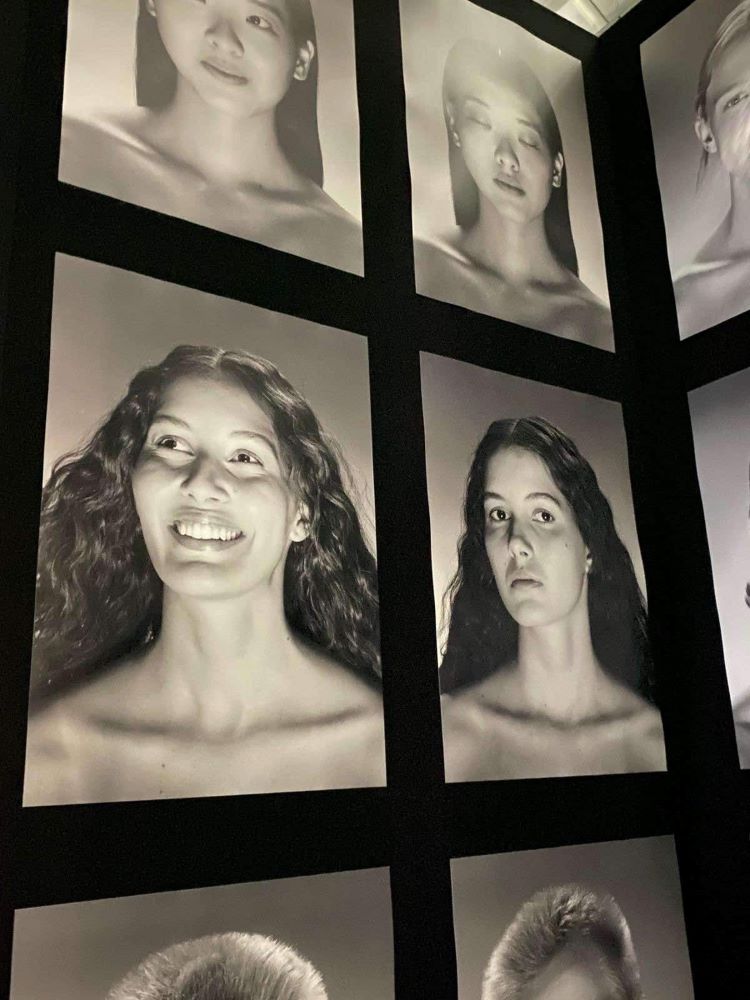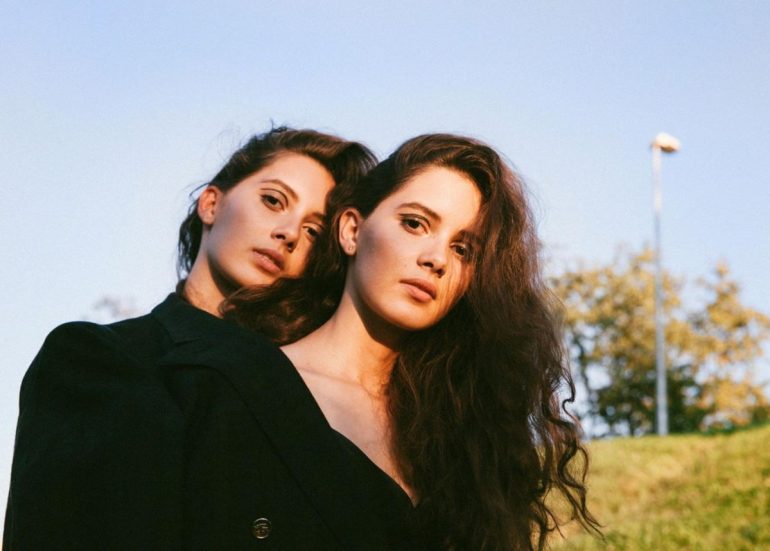Veronika and Dominika Tesařová are twin sisters studying in Brno and Prague respectively. Besides having professional aspirations in different fields, they are also working in the modelling industry, both in the Czech Republic and elsewhere in Europe, including a call for the Italian luxury fashion brand Gucci in Milan.
Brno Daily spoke to Veronika and Dominika for an up-to-date and down-to-earth account of what it is like to be a model, and insights on some of the most frequent questions regarding this business.
BD: How did you get started in the world of modelling?
V: Around the age of 13-14, modelling agencies started reaching out to me and my sister through social media. Our mom then took us to Prague, where we had meetings with about three agencies, and eventually, we signed a contract with one of them.
BD: What different kinds of modeling have you done?
V: In the beginning, my sister and I primarily did photoshoots, and later we also tried walking in a few fashion shows. Unfortunately, we’re both quite short for runway modelling, so we stuck to photoshoots.

BD: What are the advantages and disadvantages of modelling as twin sisters?
D: On the positive side, the best part is being able to share the experience with someone you love and trust. You’re never alone in it, and you always have someone there to support and help you. It also makes things more fun on set when you’re together. However, the downside is that people often see you as a single identity, rather than as two individuals with distinct personalities and traits.
BD: What is the most enjoyable part of being called for a job, and what is the least enjoyable?
D: The most enjoyable part is the excitement and anticipation that comes with every new project—there’s always something new to learn and experience. The least enjoyable part is the unpredictability of the work schedule, which can sometimes make it difficult to plan personal time.
V: Being chosen for a photoshoot is always a great feeling. However, the process can sometimes be quite lengthy, and it often happens that they end up selecting someone else. This occurs quite frequently. That’s why I only truly celebrate once we’re on location.
BD: Financially speaking, is it profitable to be fully dedicated to modeling?
D: Here in the Czech Republic, there’s really a small chance that someone could make a living solely from modelling. Usually, if someone wants to pursue modeling professionally at a young age, they need to travel to New York, Paris, or Milan, where the most work is available. The highest earnings come from advertisements for beauty brands, but the chances of landing such a campaign are very low. Typically, these types of ads go to established models. That’s why it’s not very likely for someone in the Czech Republic to sustain themselves solely through modeling.

V: It can be profitable, depending on the type of modeling you pursue. Commercial modeling, such as TV ads, tends to be the most profitable and less time-consuming. On the other hand, high-fashion modelling, which includes fashion weeks and editorials, requires constant hard work and dedication, yet it can still be challenging to make a stable income from that alone.
BD: At what point does modelling shift from being a hobby to becoming a job or a lifestyle?
D: That question can have many different answers, depending on the person. For us, it has always been more of a hobby, with school and university being the priority. However, I know many models who treat it as their full-time job, and for them, it’s definitely a lifestyle that permeates their everyday life.
BD: Is beauty still considered subjective in the modelling industry?
V: Beauty in high fashion is very subjective. Nowadays, we often see very interesting faces that are unique or even stand out in some way. It’s no longer about the stereotypical beauty that was prominent in the ’90s; now, it’s primarily about being captivating and being yourself. However, one aspect that hasn’t changed much in modeling is the emphasis on a model’s height. For a girl to pursue modelling, she needs to be at least 172 cm or taller, and we’re now also seeing models who are around 182 cm.
D: Absolutely! Every brand has its own vision and interpretation of beauty. Each designer or company has a specific “look” they are seeking, which allows for a range of different aesthetic ideals. That’s one of the things I love most about fashion—it allows for uniqueness and individuality.
BD: Based on what you’ve seen, is the experience different for male, female, and non-binary models? Is it rougher or easier for any particular group?
V: I would say that modeling is still more competitive for women than for men. There are many more female models, which makes it quite crowded. While there aren’t as many men in modeling, it’s still a very competitive environment for them as well. I’ve never encountered non-binary models in my career, so I can’t really assess their experiences.
D: The experience varies between genders due to the different expectations and standards applied to each group. Women often face more rigid beauty standards and a competitive atmosphere, whereas men typically experience less stringent requirements, although that is changing with growing emphasis on certain body types. Non-binary models often face unique challenges, as the industry is still adjusting to a broader understanding of gender, which can limit opportunities. However, there is increasing demand for diversity and representation, which is helping to make space for all genders.
BD: How has your relationship with fashion, beauty, and performance evolved over the years?
V: At first, I didn’t really know much about fashion trends or anything like that, but gradually, I developed a connection with it and started taking a greater interest in various trends.
D: Fashion has always been a significant part of my life, and I see it as a powerful tool for self-expression. Initially, I was fascinated by the visual aspects, but over time, I’ve come to appreciate fashion as an art form. Modelling has helped deepen that connection, showing me that it’s not just about wearing beautiful clothes—it’s about communicating a message and telling a story through what you wear.
BD: How do you deal with criticism and praise?
V: At the beginning, my sister and I didn’t encounter any criticism; in fact, it was quite the opposite. However, when criticism did come, and in a rather harsh form, it affected us both a bit, and it’s something we’ll probably never forget. Praise is always kind and pleasant to hear. It influenced us especially in the beginning, as it pushed us forward, gave us confidence, and provided us with a reason to keep going.
D: Criticism has always been difficult for me, and honestly, I struggle with it just like anyone else. Whenever I receive criticism, I find it hard to process and handle it in a healthy way, though time definitely helps. Praise, of course, is easier to accept, but I often find myself forgetting it too quickly and slipping back into my usual mindset of “I’m not good enough.”
BD: If you could redesign the industry, what changes would you make while preserving its essence?
V: I would definitely change the way models are perceived. In today’s modelling world, we are often viewed as objects rather than human beings with emotions. It’s more about having a humane approach.
D: I would focus on promoting inclusivity, diversity, and sustainability. I would create more opportunities for models of all body types, ethnicities, and genders, ensuring representation in every aspect of fashion, from runways to ad campaigns. However, I would preserve the industry’s core of creativity and artistic expression, which are its driving forces.

BD: What would be your dream job as a model, and what is your professional aspiration?
V: My dream job in modelling would definitely be a campaign for a beauty brand or a bigger editorial, like one for Vogue. As for my professional career, I’m studying educational administration and policy, and I would ideally like to work in educational policy or as an academic, dedicating my life to research and academia. We’ll see which path I eventually choose.
D: As a model, my dream would be to land a campaign with Maison Kitsuné. In terms of my professional career outside modeling, my true passion lies in academia, and my ultimate goal is to be a respected professional in my field of study.
BD: Do you have any advice for someone interested in trying modelling?
V: Definitely, if you want to start, it’s important to choose the right modelling agency, one that feels right for you and where you feel comfortable. It’s also crucial to remember that the beginning is usually slow, and it takes time, so it’s important not to give up. And lastly, never force yourself into anything; only do things that resonate with you.
D: Definitely take your time and don’t rush into it. Confidence is key—believe in yourself and learn to say no when necessary. It’s important to understand your own value, set boundaries, and take the time to grow and learn before diving in fully. Most importantly, stay true to who you are.







